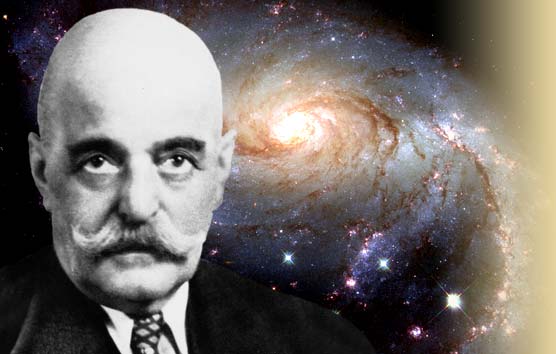The Gurdjieff Foundation is rooted in the teachings and traditions introduced by George Ivanovitch Gurdjieff. This tradition, often referred to as “The Work,” posits that people’s daily lives are largely mechanical and that they live in a state of sleep. Gurdjieff’s primary aim, akin to many sacred traditions, was to assist individuals in awakening from this state of unconsciousness. The methods and tools of “The Work” are designed to integrate a person’s physical, emotional, and intellectual centers, leading to a fourth way of consciousness.
While Gurdjieff’s teachings are primarily an oral tradition emphasizing the teacher-student relationship, there have been extensive writings on his perspectives. This tradition provides a clear and concise summary of Gurdjieff’s life and teachings, and it is one of the most informative sources that describe the actual practices of the tradition. The teachings offer resources for those who wish to delve deeper, including recommended readings and significant published music from the Gurdjieff vault.

History
The Gurdjieff Foundation has its origins in the teachings and practices inspired by G. I. Gurdjieff. After Gurdjieff’s passing in 1949, the Gurdjieff Foundation Paris was established and was led by Jeanne de Salzmann from the early 1950s. She collaborated with other direct pupils of Gurdjieff until her death in 1990. Following her, Michel de Salzmann took the helm until his demise in 2001.
The International Association of the Gurdjieff Foundations (IAGF) serves as an umbrella organization connecting several major groups: The Gurdjieff Foundation in the USA, The Gurdjieff Society in the UK, the Institut Gurdjieff in France, and the GI Gurdjieff Foundation – Caracas in Venezuela. Additionally, there’s a network of partner foundations in South America.
The Gurdjieff Foundation of New York had Henry John Sinclair, 2nd Baron Pentland, Lord Pentland as its president from its inception until his death in 1984. Dr. William J. Welch then led the foundation until his passing in 1999. Subsequently, leadership was shared by Paul Reynard, a painter and teacher of Gurdjieff Movements, and Frank R. Sinclair, author of several books. After Reynard’s death in 2005, Frank R. Sinclair continued as president until 2011 and currently holds the title of president-emeritus.
Structure and Organization
The Gurdjieff Foundation is a manifestation of the teachings and practices inspired by G. I. Gurdjieff. It is structured around various groups that are organized as Foundations, Institutes, and Societies. These groups are interconnected under the umbrella of the International Association of the Gurdjieff Foundations (IAGF). This association serves as a cohesive force, linking the primary organizations: The Gurdjieff Foundation in the USA, The Gurdjieff Society in the UK, the Institut Gurdjieff in France, and the GI Gurdjieff Foundation – Caracas in Venezuela. Beyond these, there’s a network of partner foundations spread across South America, ensuring a broad reach of Gurdjieff’s teachings.
The leadership and organizational structure of the foundation have seen various stalwarts at its helm. For instance, the Gurdjieff Foundation of New York was presided over by Henry John Sinclair, 2nd Baron Pentland, Lord Pentland from its inception until 1984. Following him, Dr. William J. Welch took over the leadership until 1999. After Dr. Welch, the foundation was co-led by Paul Reynard, known for his expertise in Gurdjieff Movements, and Frank R. Sinclair, an author. Atiofter Reynard’s passing in 2005, Sinclair continued his leadership until 2011 and now holds the title of president-emeritus.
This structure ensures that the teachings of Gurdjieff are disseminated and practiced with authenticity, maintaining the essence of his teachings while adapting to the needs of contemporary society.
Functions and Operations
The Gurdjieff Foundation is an embodiment of G. I. Gurdjieff’s teachings and practices. Its primary function is to perpetuate and disseminate the teachings of Gurdjieff, ensuring that they remain accessible and authentic for future generations. To achieve this, the foundation has organized various groups as Foundations, Institutes, and Societies. These entities are interconnected under the International Association of the Gurdjieff Foundations (IAGF), ensuring a unified approach to the teachings.
The Gurdjieff Foundation Paris, established after Gurdjieff’s death in 1949, played a pivotal role in the early days, led by Jeanne de Salzmann in collaboration with other direct pupils of Gurdjieff. The IAGF acts as an umbrella organization, connecting major groups like The Gurdjieff Foundation in the USA, The Gurdjieff Society in the UK, the Institut Gurdjieff in France, and the GI Gurdjieff Foundation – Caracas in Venezuela. Additionally, there’s a network of partner foundations in South America, expanding the reach of the teachings.
The operations of the foundation encompass regular group meetings, study of Gurdjieff’s ideas, movements, sacred dances, and music. The leadership structure has seen various prominent figures, ensuring that the foundation remains true to its core principles and objectives. The president of the Gurdjieff Foundation of New York, for instance, has been a pivotal role, with figures like Henry John Sinclair and Frank R. Sinclair playing significant roles in its history.
Conclusion
The Gurdjieff Foundation is an organization deeply rooted in the teachings and practices introduced by G. I. Gurdjieff. Established after Gurdjieff’s passing in 1949, the foundation aims to perpetuate and disseminate his teachings, ensuring they remain accessible and authentic for future generations. Organized as Foundations, Institutes, and Societies, these groups operate under the umbrella of the International Association of the Gurdjieff Foundations (IAGF). The foundation has played a pivotal role in preserving the essence of Gurdjieff’s teachings, which emphasize awakening from a state of unconsciousness and achieving a harmonious integration of the physical, emotional, and intellectual centers. Over the years, the foundation has been led by various prominent figures, each contributing to its growth and ensuring its adherence to the core principles set by Gurdjieff.
